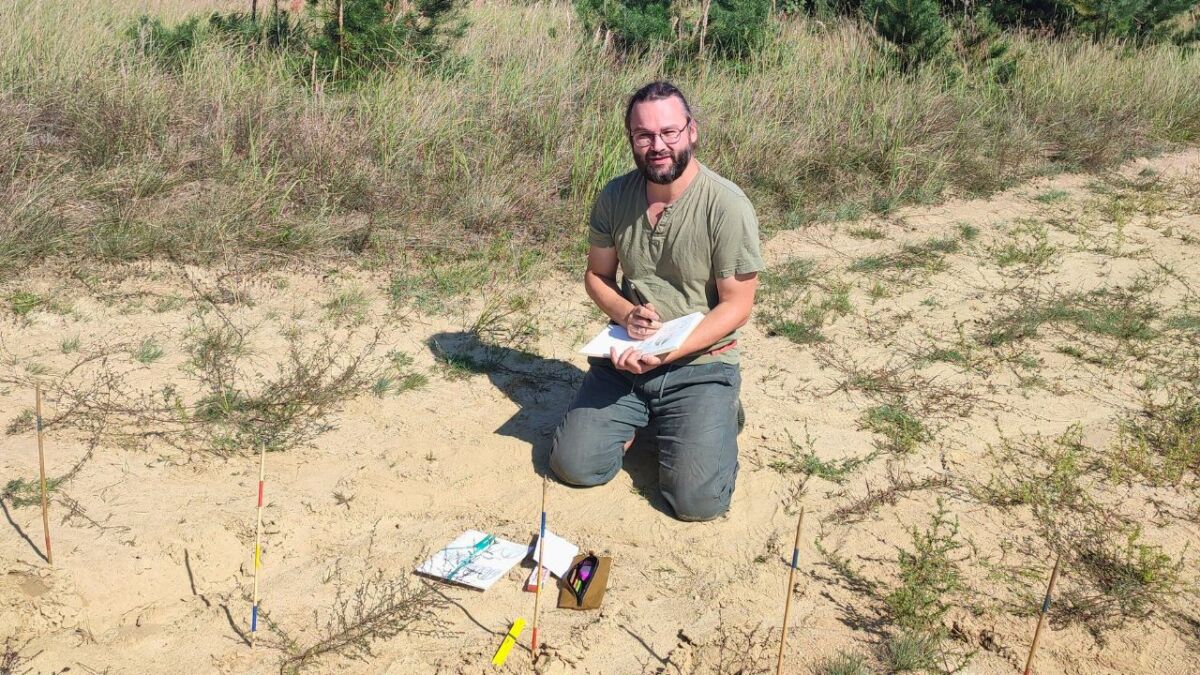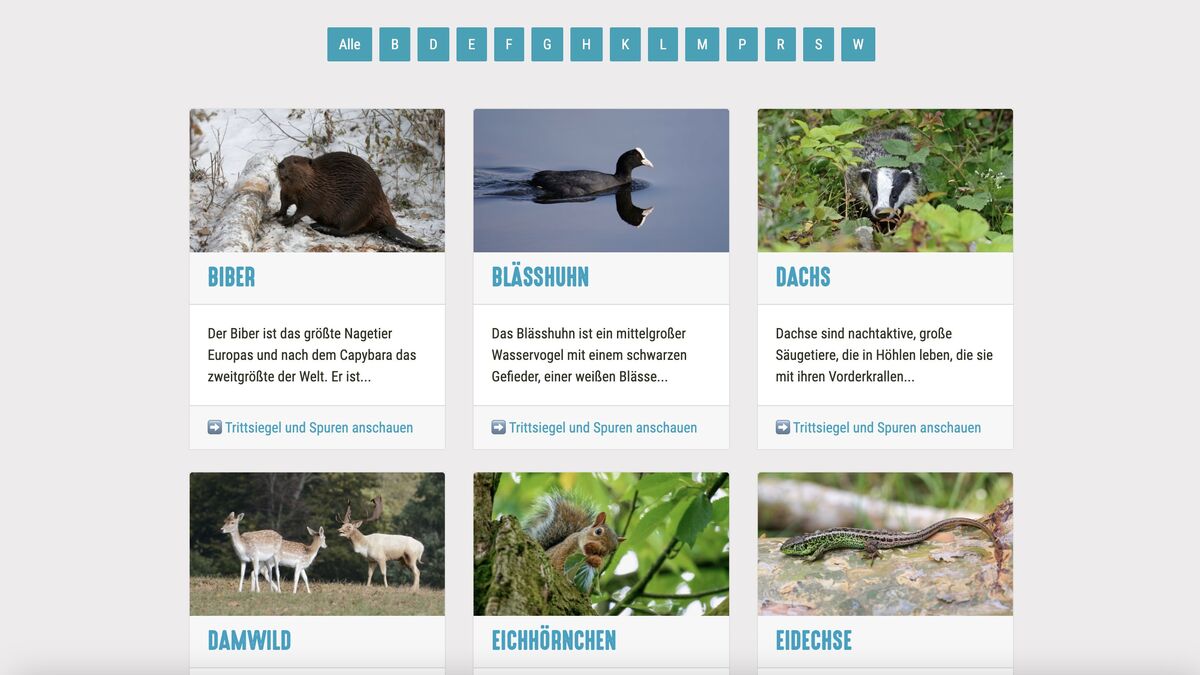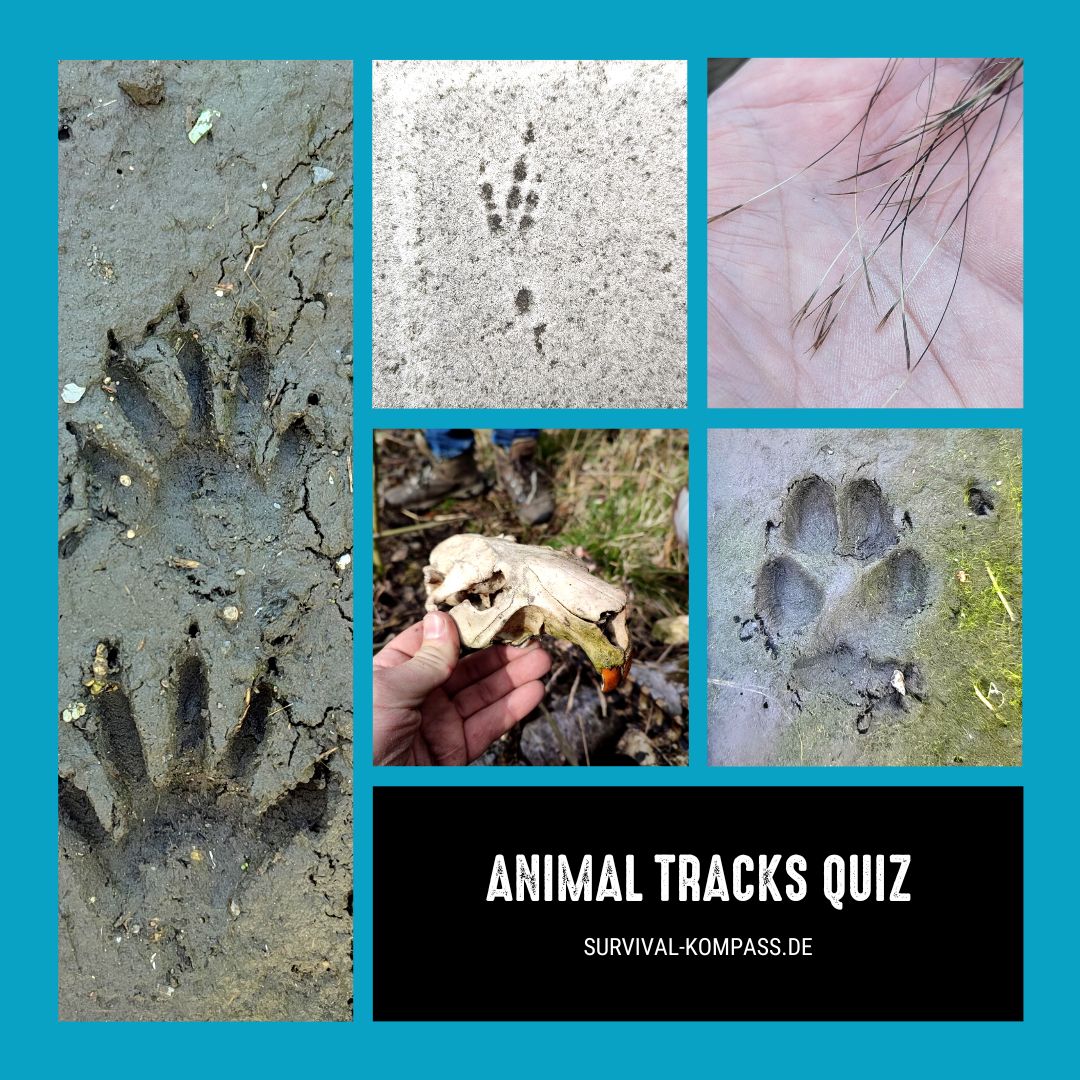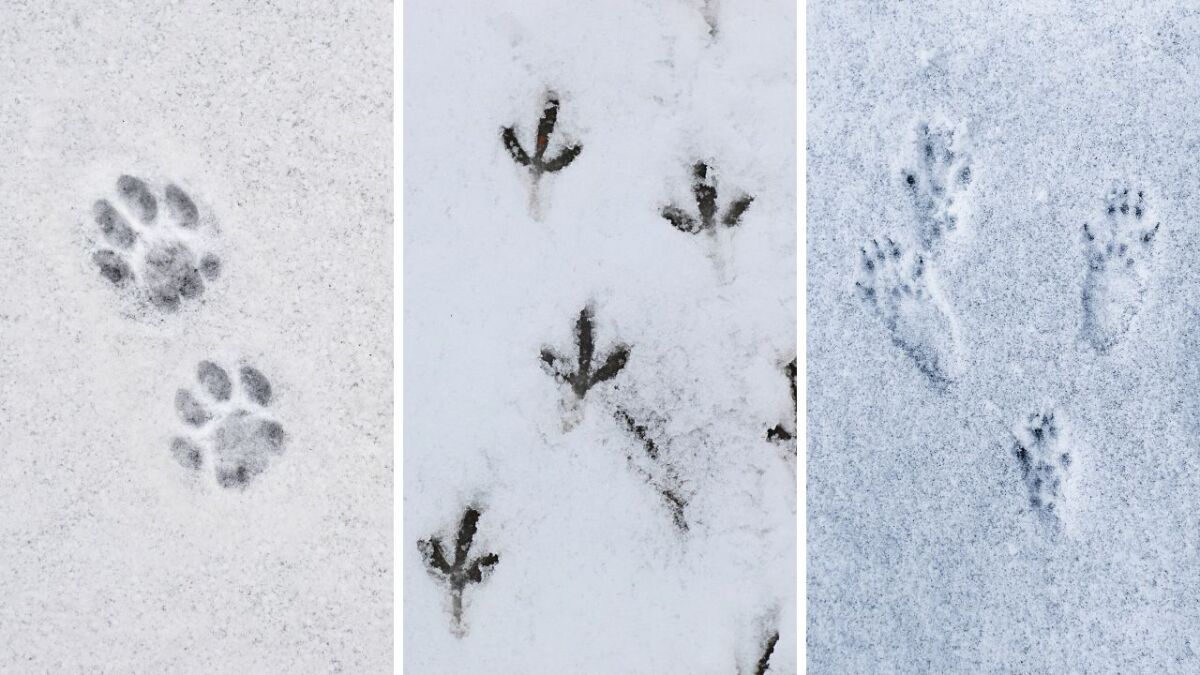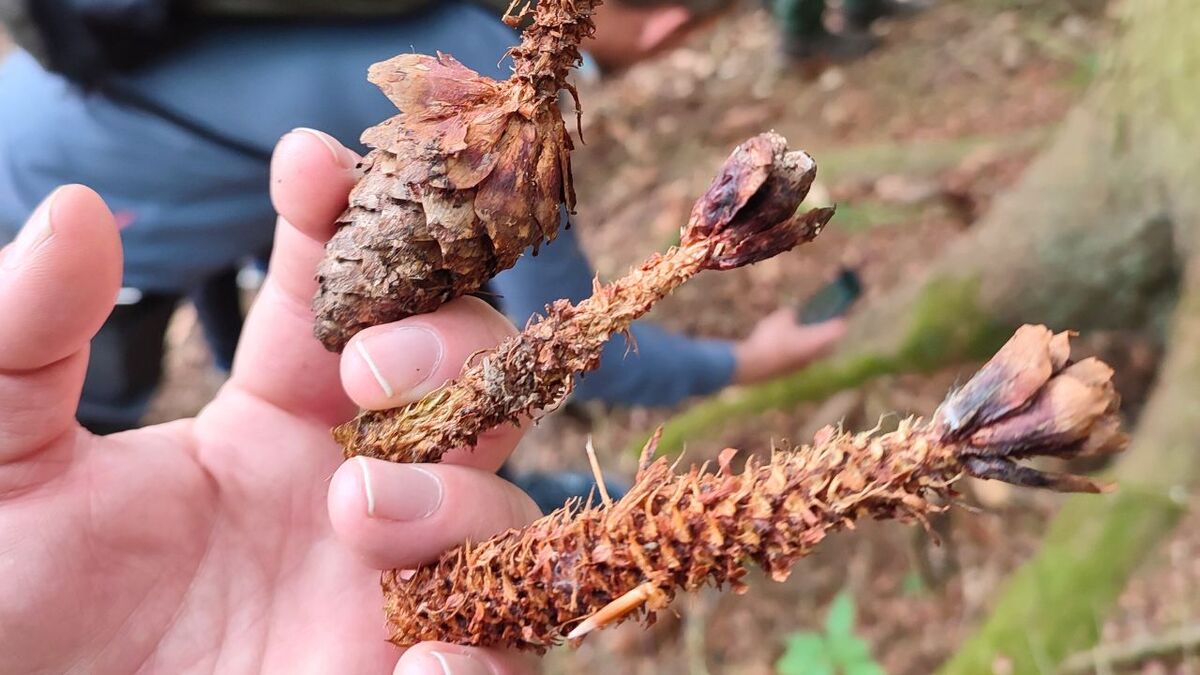
Feeding marks on cones? Who was it? Mouse, squirrel, woodpecker, or crossbill?
👉 The key facts from this guide
- Discover the different cone eaters like squirrels, mice, woodpeckers, and crossbills and their unique feeding traces.
- Learn to identify the messy, frayed cones of squirrels, often accompanied by piles of cones.
- Discover the evenly and neatly gnawed cones of mice, which typically work close to the ground.
- Recognize the frayed and protruding cones of the woodpecker, which fixes cones in woodpecker forges.
- Find the cleanly split cones of the crossbill, which works with crossed beak tips.
- Learn why cones are an important food source for many woodland animals and how you can become a cone detective yourself.
Have you ever looked closely at a nibbled cone? If not, that will change today!
When I first consciously held a crafted cone in my hand, I was fascinated. It was as if the forest was whispering a secret message to me.
In this guide you will learn:
- Who the main suspects behind the cone artworks are
- How to recognize their traces
- Why being a cone detective is so exciting
Whether you're a forest pro or a nature novice - here you will find exciting information about our furry and feathered forest inhabitants.
Are you ready for an adventure? Then come along! Let's uncover the secrets of the cones together.
Quick Overview: Who Eats What?
Before we dive into the details, let's take a look at the main suspects. I have spent countless hours in the woods and compared with books to put together this overview for you. And it was worth every minute!
Overview of Feeding Marks on Cones
| Animal | Feeding trace on spruce cones | Special feature |
|---|---|---|
|
Squirrel 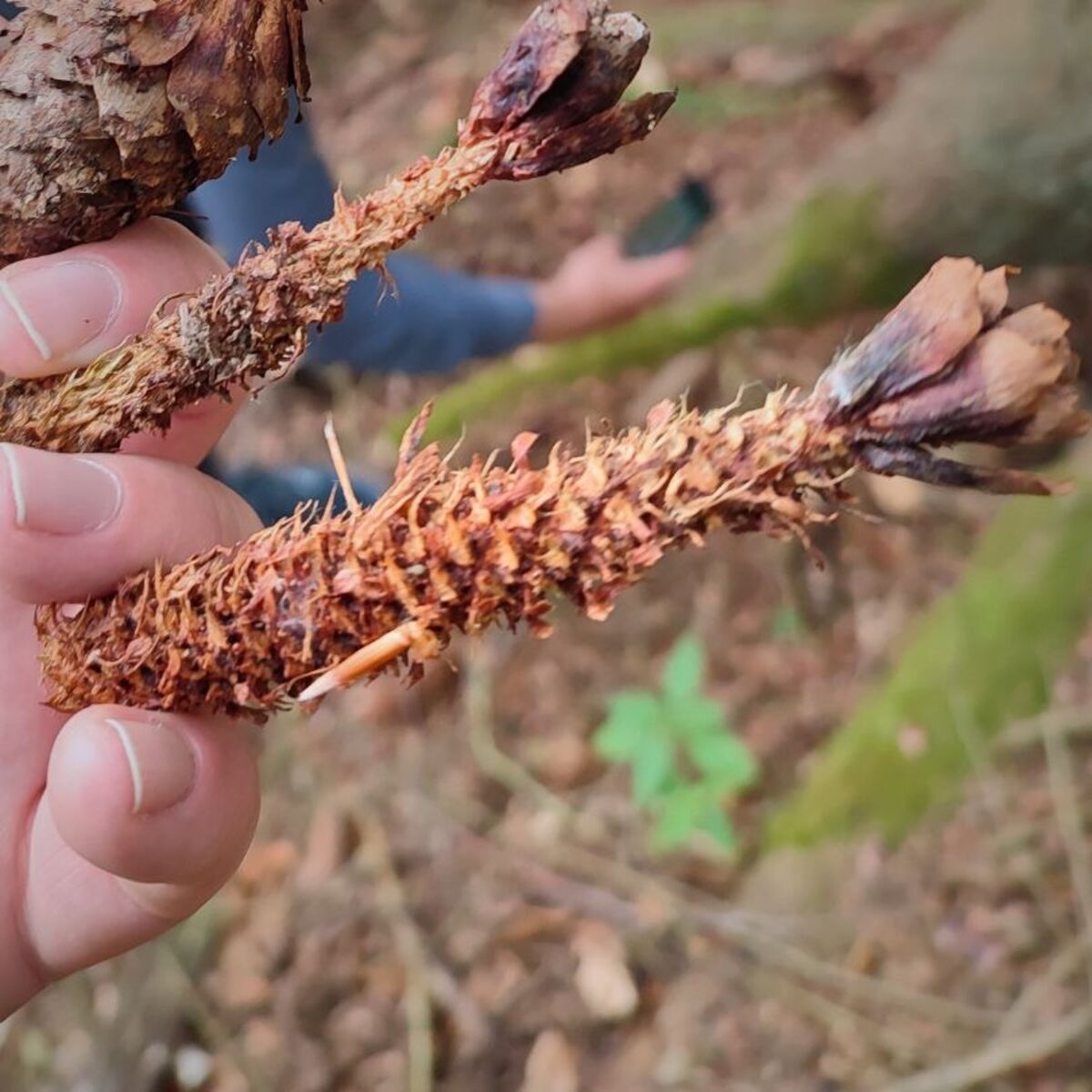 |
Cones are raggedly chewed up to heavily frayed, the tip is usually not worked on, the end is often pointed (both short and long) | Often leaves piles of cones on the ground, found much more often than cones from the mouse, squirrels bite and tear off the scales |
|
Mouse 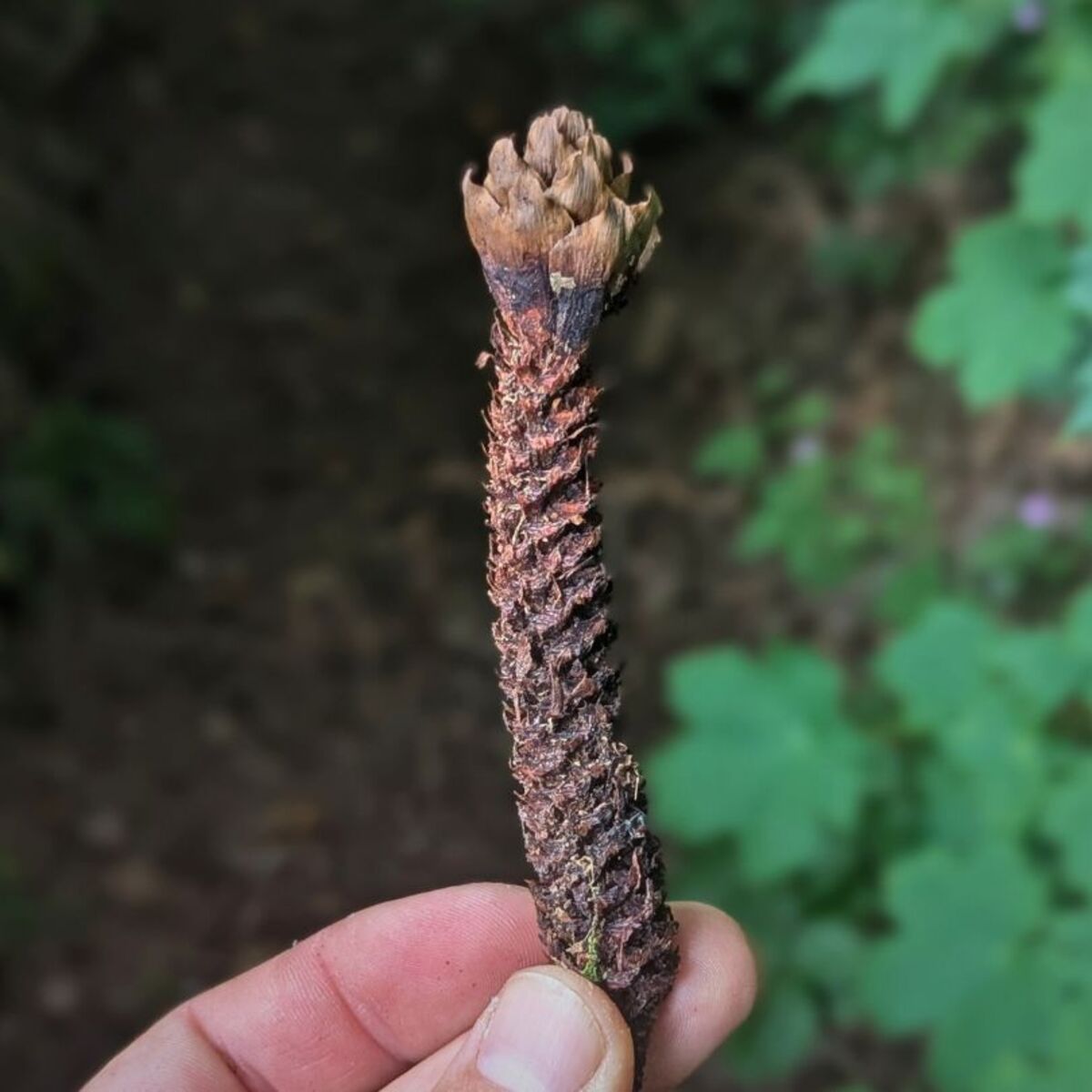 |
Evenly and closely gnawed, round end and much gnawed at the tip | Usually works on the ground, cone has a smooth surface, scales are evenly gnawed off, not torn or frayed |
|
Woodpecker 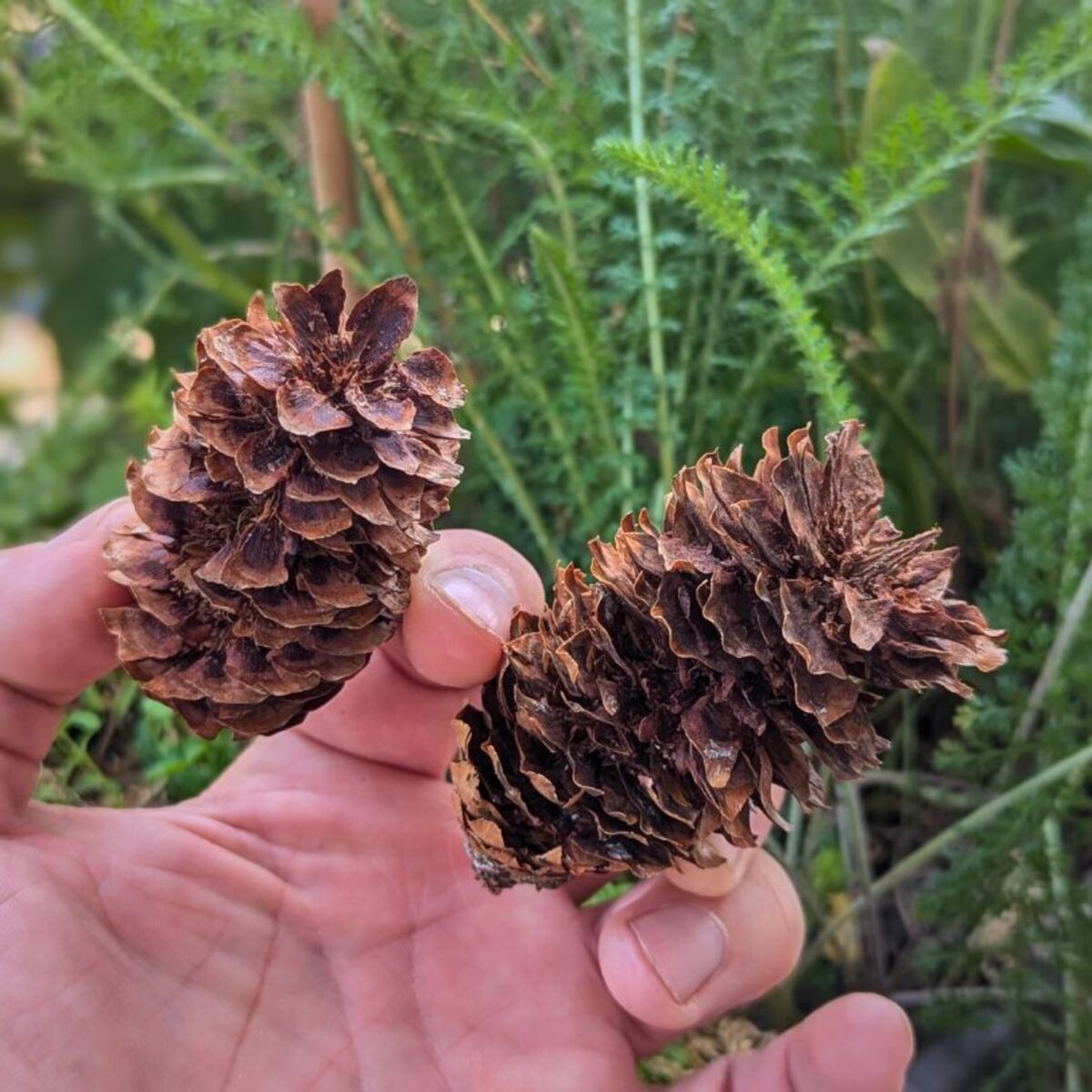 |
Very frayed, scales remain on the cone and stick out because woodpeckers twist and peck at the cone scales | Uses woodpecker forges to secure cones |
|
Crossbill 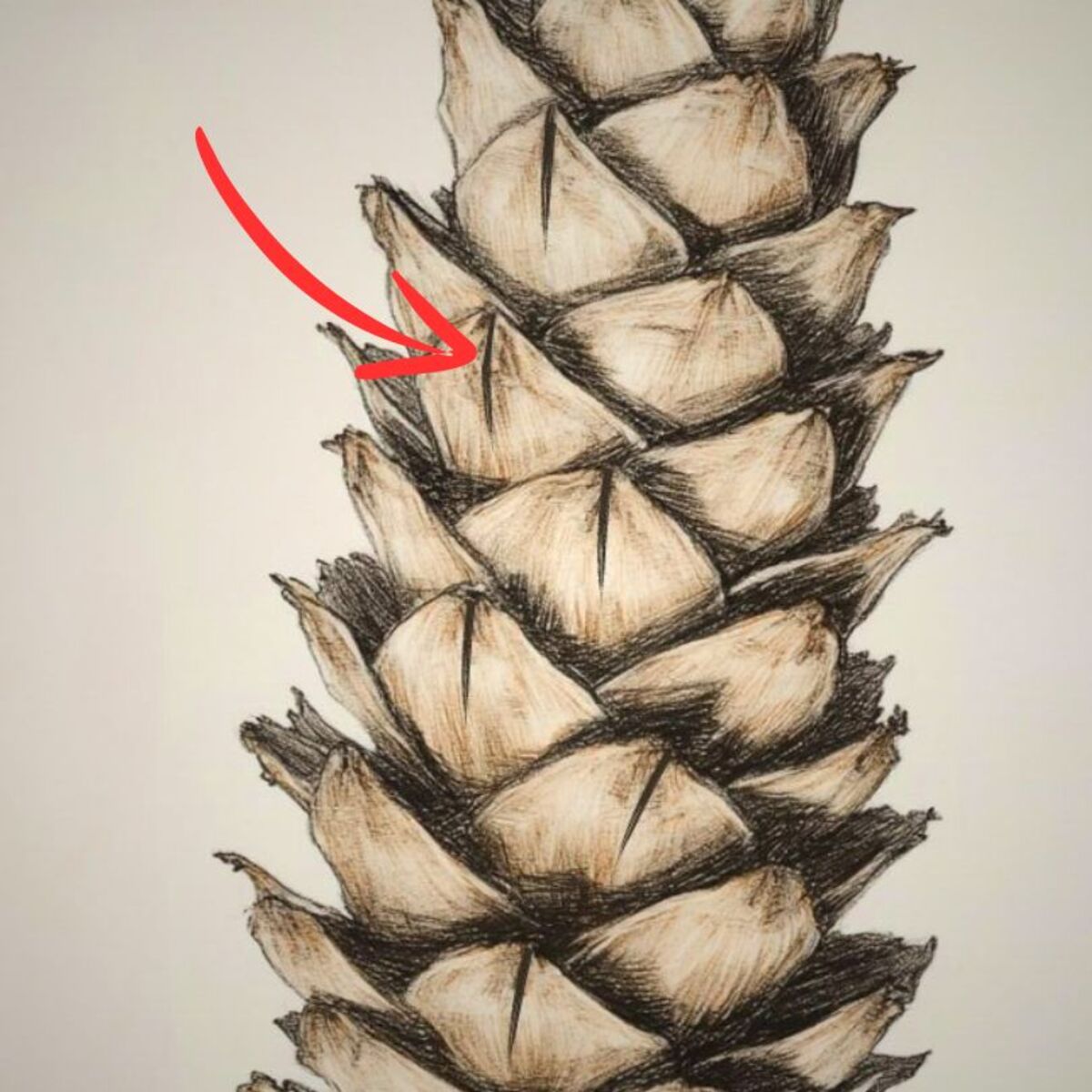 |
Cone scales are often split lengthwise, only slightly frayed cone (if at all) | Uses its crossed beak to pry open the scales, fishes the seeds out with its tongue, and when pulling out, the scale often splits lengthwise in the middle |
Now let's go into detail and take a closer look at the feeding traces and the associated animals.
Squirrel: The Acrobatic Rodent
If you want to find a true artist among the cone eaters in the forest, then keep an eye out for the squirrel.
These furry acrobats have particularly captured my heart. I can sit for hours watching them at work.
"Nature is full of geniuses. The squirrel is one of their masterpieces."
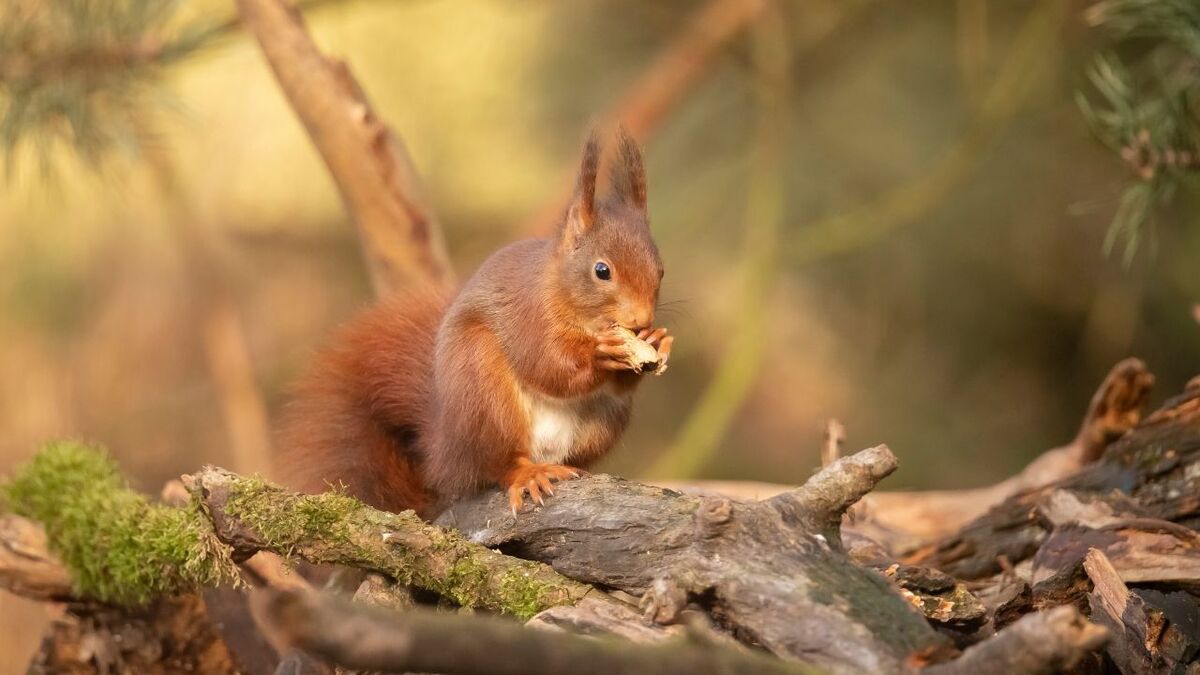
The Cone Artworks of Squirrels
Imagine trying to peel a pineapple - with your eyes closed and wearing gloves. That's roughly what the cones look like that have been worked on by squirrels.
I like to call them "chaos artists of the forest". Here are the characteristics of their work:
- Ragged, unkempt cones: As if a miniature tornado has hit the cone - the cone scales are unevenly eaten away.
- Pointed end: The lower end of the cone often looks like a frayed toothpick - sometimes long, sometimes short.
- Twist marks: Squirrels twist the cone while eating, resulting in spiral feeding patterns.
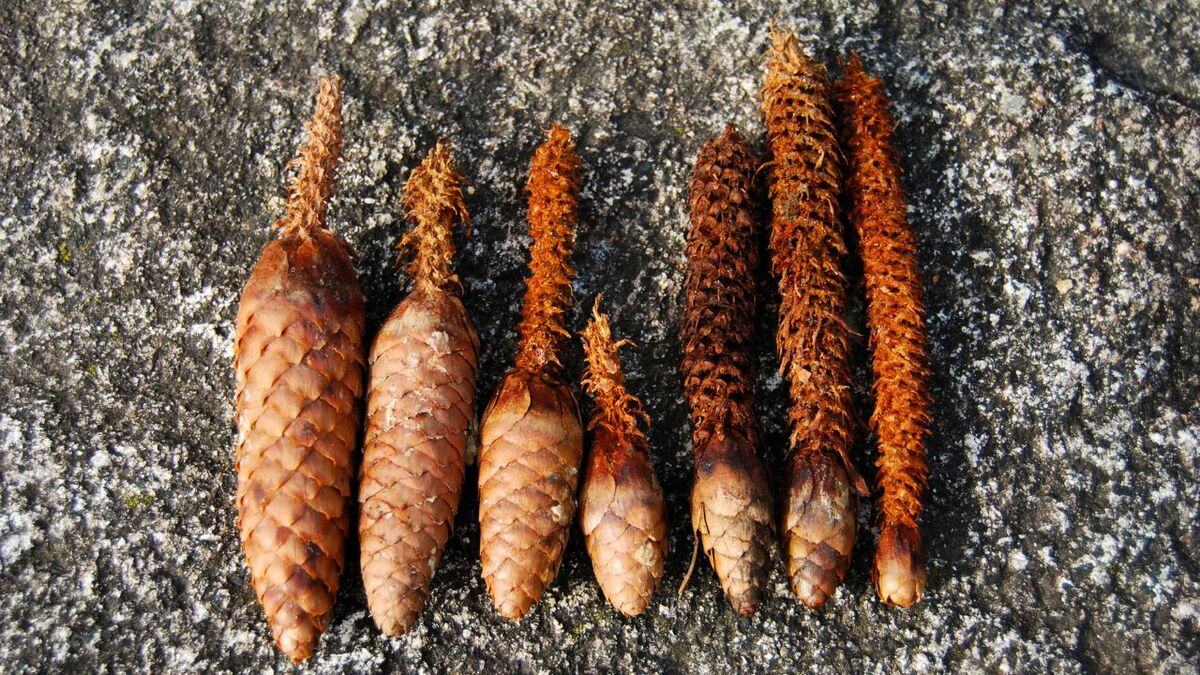
I still remember the day when I found a "squirrel cone" for the first time. It was as if I had discovered an abstract piece of art in the middle of the forest!
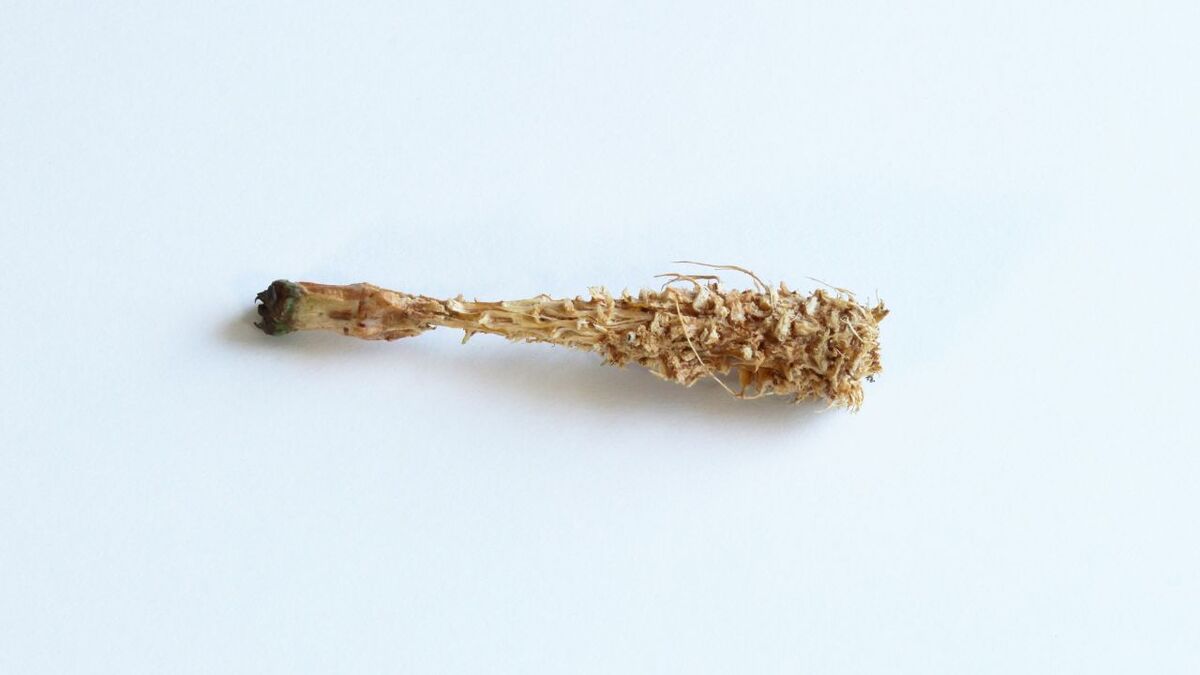
The Squirrel Strategy
These little rodents are true strategists. They usually choose elevated, safe spots for feeding. Tree stumps or thick branches are their preferred "restaurants".
Here are a few facts that I have gathered over the years:
- In the tree: There, the cones are bitten off, they fall down. And are eaten.
- Cone piles: You often find whole collections of processed cones under trees. These are the remnants of their meals.
- Seasonal preferences: In autumn, when the cones are ripe, you can particularly observe squirrels at work.
- Food storage: They hide excess cones for harder times. A true wonder of nature!
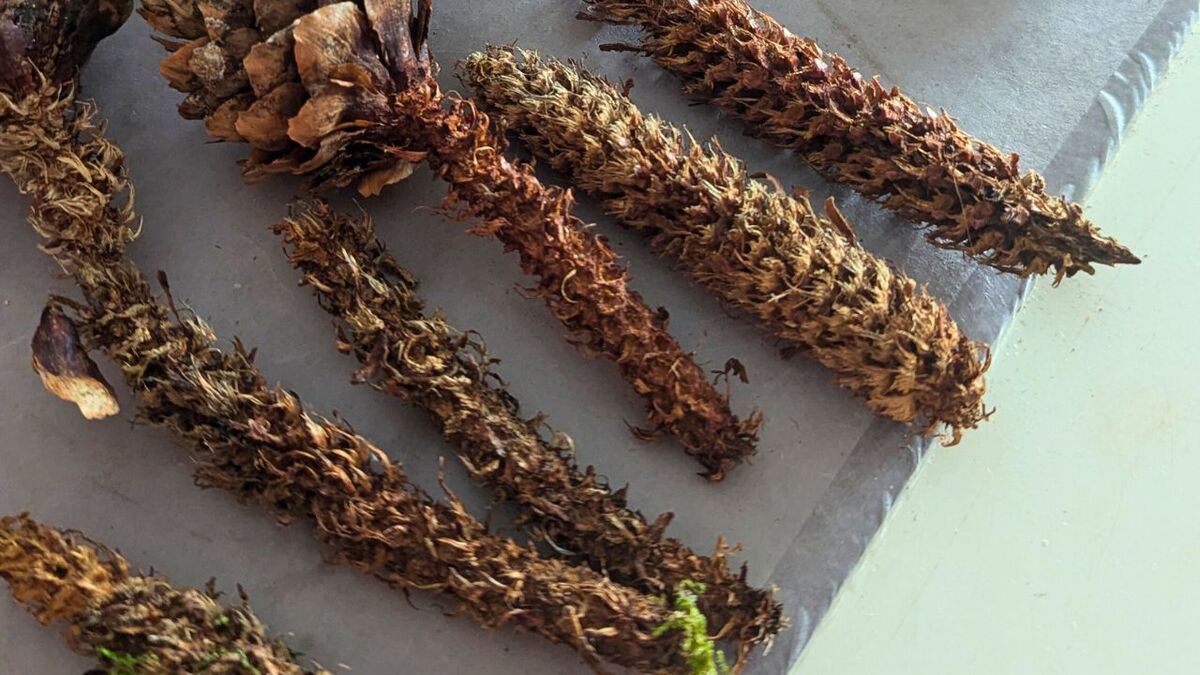
How to Find Squirrel Tracks
To discover the work of these nimble climbers, you need some patience and a sharp eye. Here are my tips for you:
- Search under conifers: Spruces and pines are particularly popular.
- Look for clusters: Where there is a processed cone, there are often more.
- Look up: Sometimes you can see the squirrels at work in the treetops.
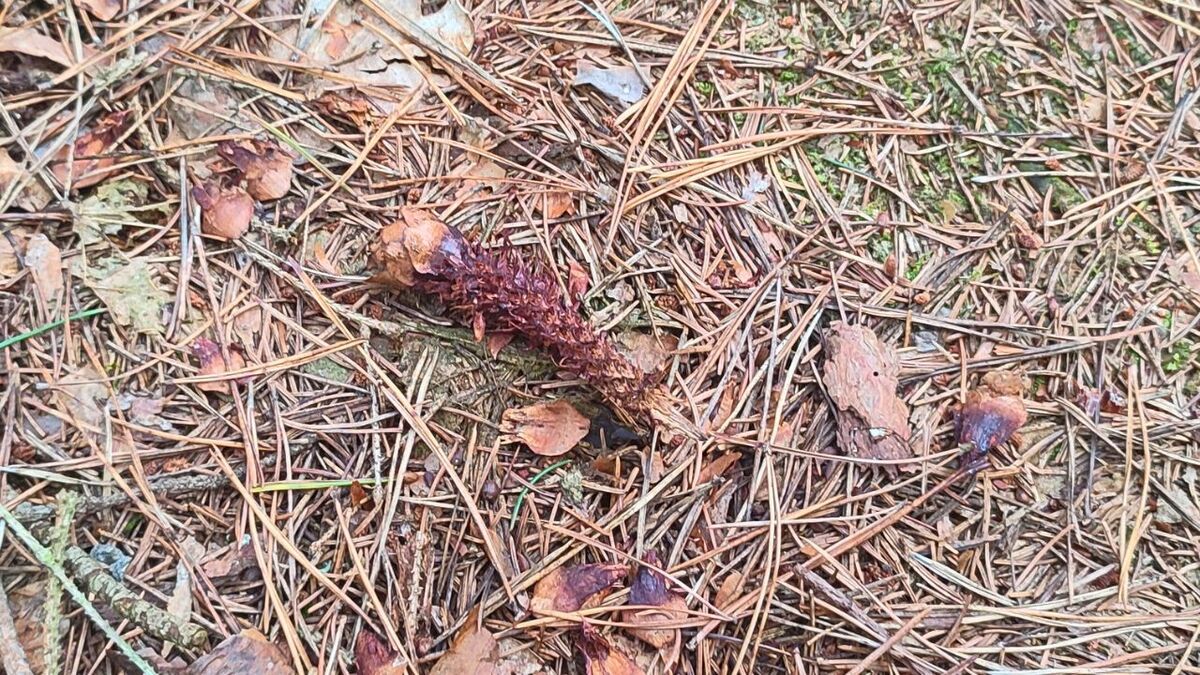
My personal tip: Early in the morning or at dusk, squirrels are particularly active. These are the best times to catch them at their cone feast.
The observation of these fascinating animals has taught me how complex and perfectly thought out nature is. Every time I find a cone worked on by squirrels, I am once again amazed by the diversity of life in the forest.
Mouse: The Secret Gourmet
While squirrels are the showmasters of the forest, mice prefer to work in the shadows. I like to call them the "stealth gourmets" among the cone eaters. Discovering their work is like a detective game – subtle, yet fascinating.
The precision work of the mice
When I first found a cone worked on by mice, I was amazed. It looked as if a miniature hairdresser had shaped the cone. Here are the main features:
- Evenly gnawed cone scales: Clean and tidy, almost artistic. No fraying.
- Rounded end: The lower end is smooth and round.
- Upper cone: Usually more gnawed than with the squirrel.
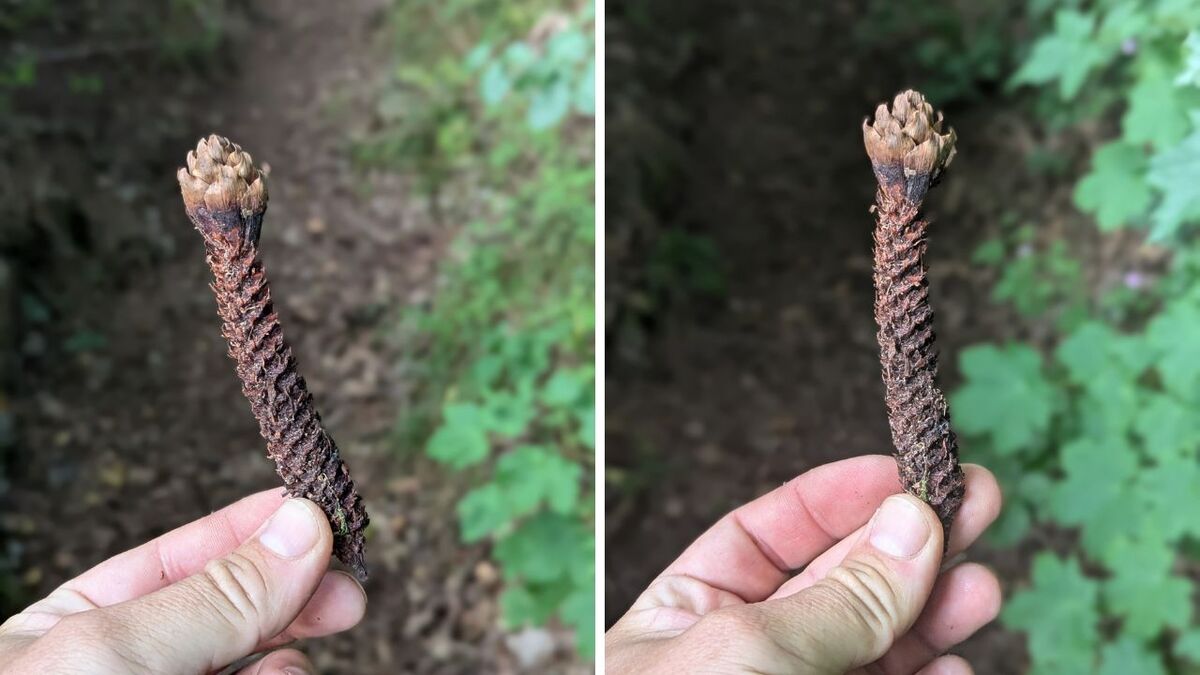
The Mouse Strategy in Cone Eating
Unlike their tree-dwelling relatives, the squirrels, mice are ground dwellers. Their strategy is characterized by caution and efficiency:
- Hidden feeding places: Mice seek sheltered spots for feeding, often under dense underbrush, in bushes, or close to the ground.
- Nocturnal activity: They do most of their work under the cover of darkness.
- Efficient use: Mice waste nothing and utilize every edible part of the cone.
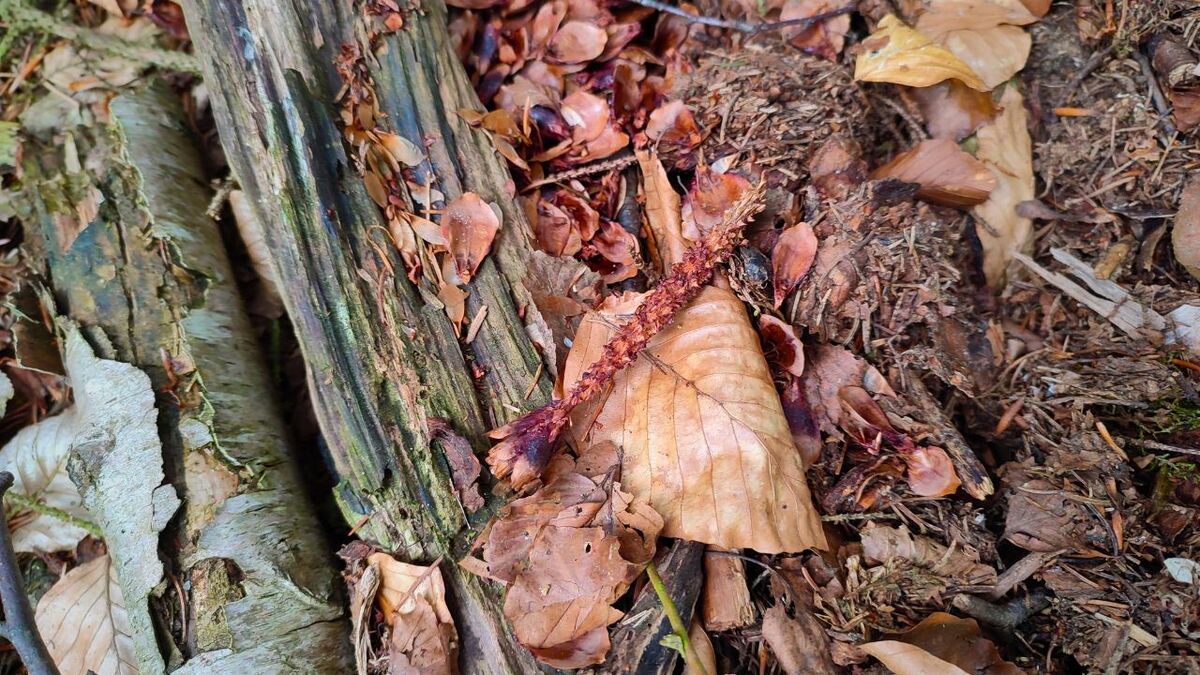
How to Find Mouse Tracks on Cones
Tracking mouse work on cones requires a bit more patience and attention. Here are my best tips for you:
- Search on the ground: Focus on the areas directly under coniferous trees.
- Look for hiding places: Check under leaves, in hollow tree trunks, or between roots.
- Timing is everything: Early in the morning, you often find fresh tracks from nighttime activity.
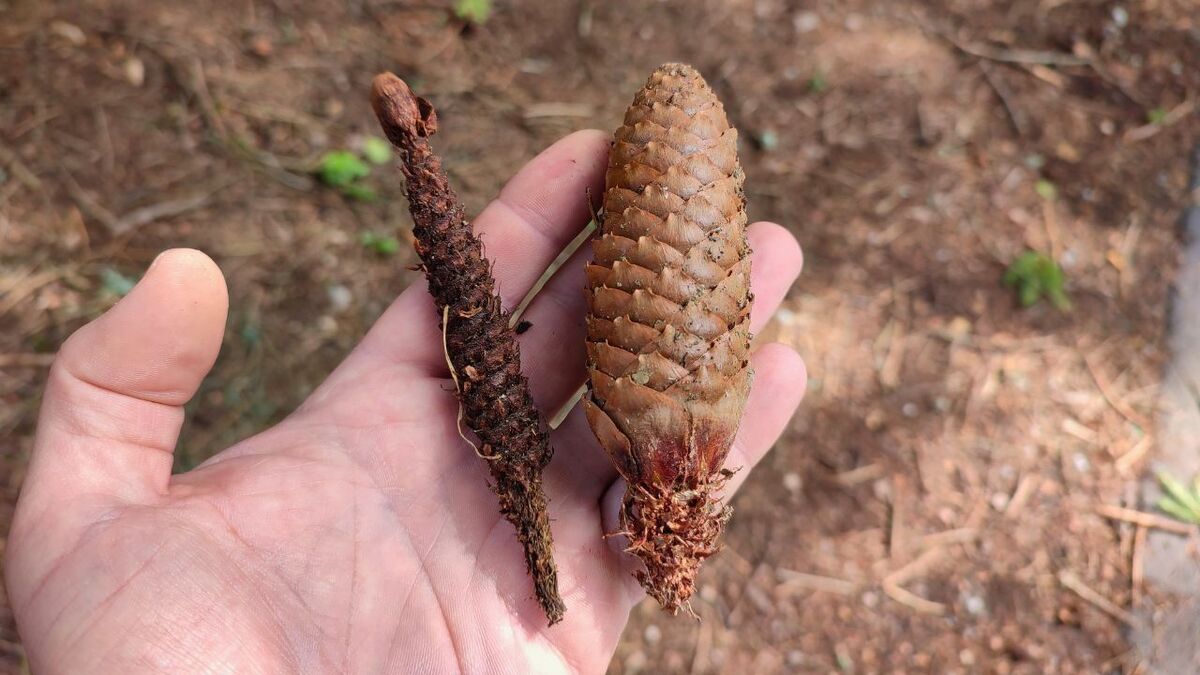
The observation of mice and their cone artworks has taught me that often the most inconspicuous inhabitants of the forest have the most fascinating stories to tell.
Every time I find a perfectly crafted mouse cone, I feel like an explorer who has discovered a hidden treasure.
Woodpecker: The Hammering Artist
If you wander through the forest and suddenly hear a rhythmic tapping, you are probably on the trail of one of the most fascinating cone workers: the woodpecker. I like to call these feathered friends the "drummers of the forest."
The Masterpiece of the Woodpecker
During my forest walks, I have found countless cones worked on by woodpeckers, and each time I am impressed anew.
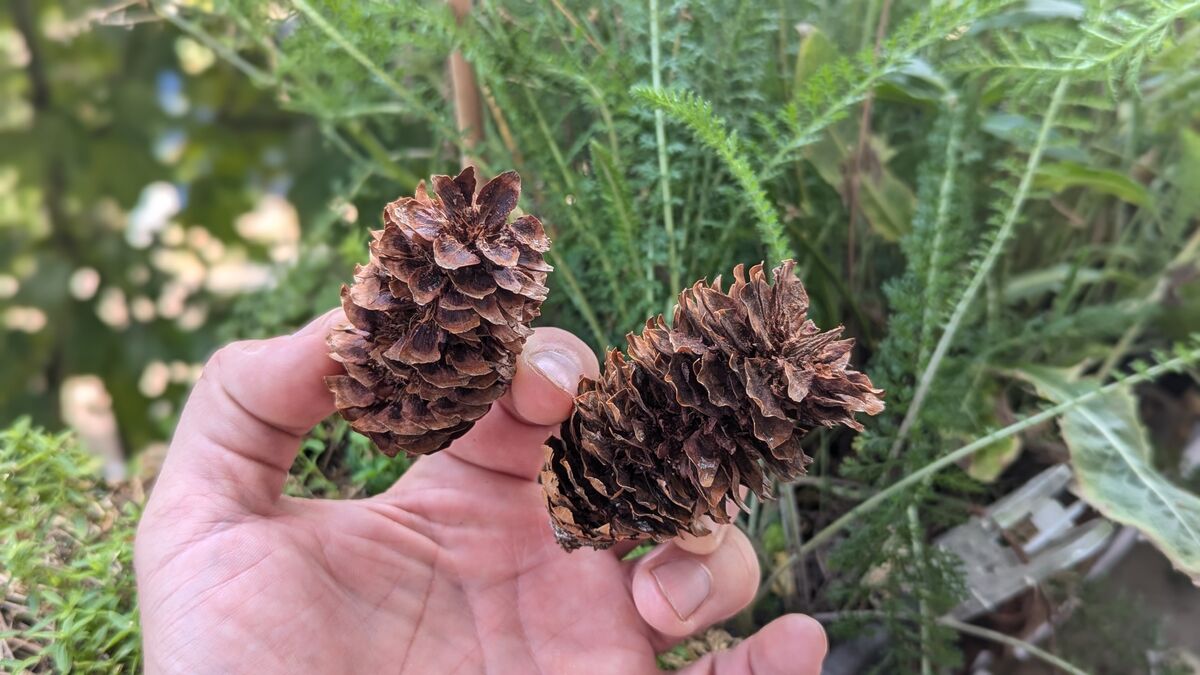
Imagine taking a pine cone and chasing it through a miniature tornado - that's roughly what the result of woodpecker work looks like. Here are the main features:
- Extremely frayed appearance: As if the cone had a wild day at a rock concert.
- Protruding scales: The scales remain on the cone but stick out in all directions.
- Twisted structures: Woodpeckers twist the cone scales and peck into them, resulting in unique patterns.
I still remember the moment when I found my first "woodpecker cone." It was as if I had discovered a small, chaotic piece of art!
The Woodpecker Strategy: Precision Meets Power
Woodpeckers are true masters of their craft. Their technique is a fascinating blend of strength and precision:
- Woodpecker forge: They use special spots on trees to fix and work on cones.
- Hammer technique: With targeted strikes, they open the cone scales.
- Tongue use: Their long tongue helps them extract the seeds deep from the cone.
I once watched for hours as woodpeckers worked at their forges. It is a fascinating spectacle of skill and endurance.
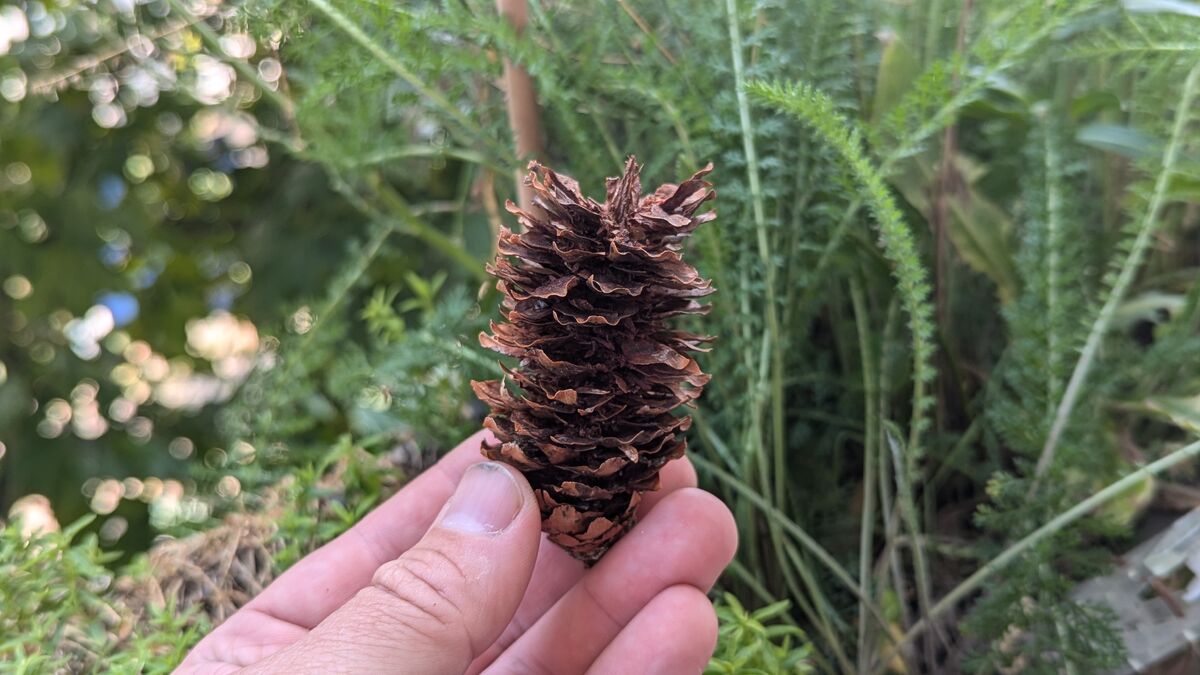
How to Find Woodpecker Marks on Cones
Tracking woodpecker work on cones is like a treasure hunt in the forest. Here are my best tips for you:
- Listen for the tapping: Often you hear woodpeckers before you see them.
- Look for woodpecker forges: Check for trees with many notches and cone remnants at the base.
- Inspect ground finds: Frayed, wild-looking cones are often woodpecker work.
A personal tip from me: Woodpeckers are particularly active early in the morning. This is the best time to catch them at work!
Woodpecker Cone: A Natural Work of Art
The cones worked on by woodpeckers are like small sculptures to me. Each one tells a story of strength, precision, and survival skills. The next time you find a particularly wild, frayed cone, you know: A master was at work here.
Crossbill: The Cone Specialist
If you think you've met all the cone experts with squirrels, mice, and woodpeckers, allow me to introduce you to the true master: the crossbill. This bird is the Picasso among cone eaters.
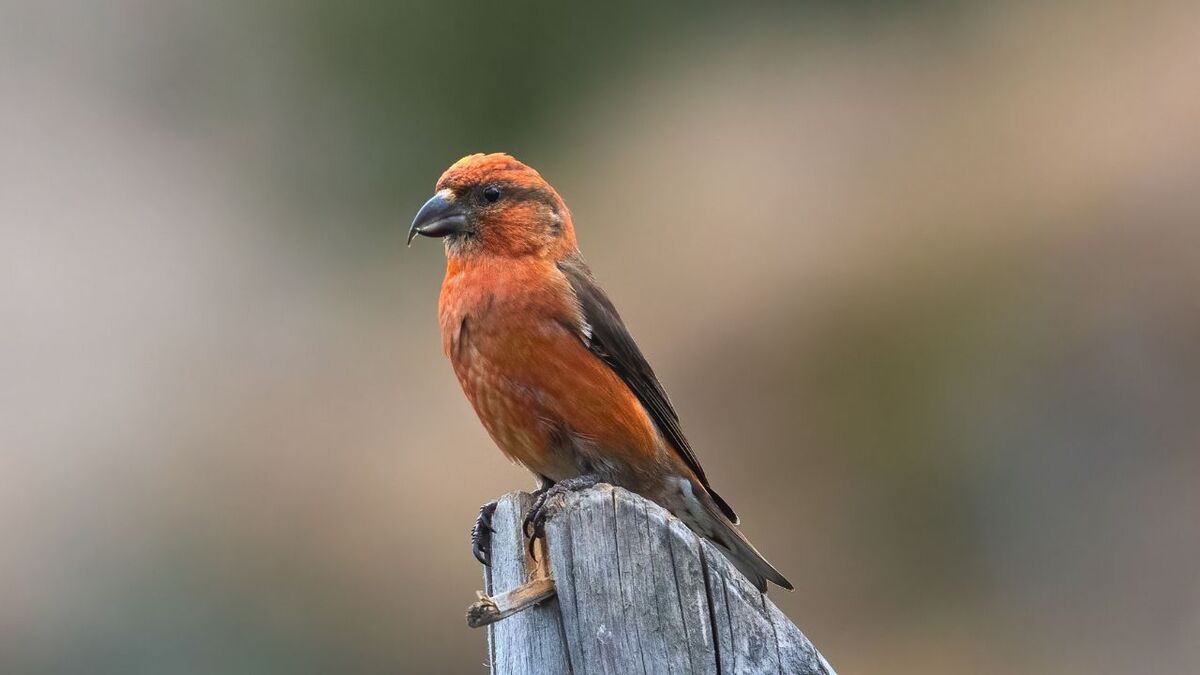
The cone art of the crossbill
During my forest expeditions, I have found some processed spruce cones, but those of the crossbill are simply unique and rare here in the north.
Imagine you would cut a spruce cone lengthwise with surgical precision - this is what the work of this feathered artist looks like. Here are the main features:
- Longitudinally split: As if someone had sliced the cone with a miniature scalpel.
- Clean edges: The cut lines are remarkably smooth and precise.
- Completely emptied: Often, hardly a seed is left.
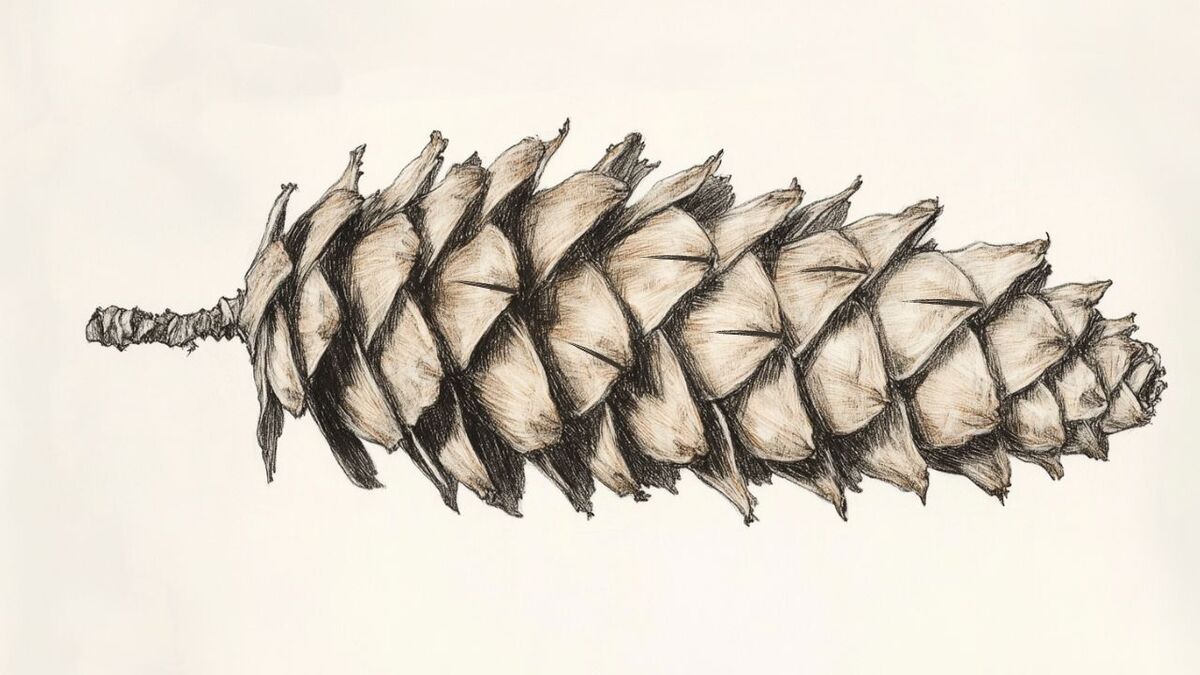
I still remember the moment when I found my first "crossbill cone." It was like an aha moment - nature can be so perfect!
Why are the cone scales split?
- Siskins insert their beak between the cone scales, twist them (using it as a lever), grab the seed, and pull the beak out. When pulling out, the longitudinal cut in the cone scales is created. (See video below)
- Siskins also eat the seeds of pine cones, but these cone scales do not split open. They use their strong beak as a lever and their tongue for fishing out the seeds.
The Crossbill Strategy: Specialization in Perfection
Crossbills are true specialists. Their beak is a masterpiece of evolution:
- Crosstipped beaks: Perfectly adapted to cut through cone scales.
- Tongue technique: A strong tongue helps to extract the seeds.
- Cooperative work: Often, several birds work on a tree.
I watched for hours in the treetops as these birds skillfully worked on the cones. It's like a well-oiled machine in action.
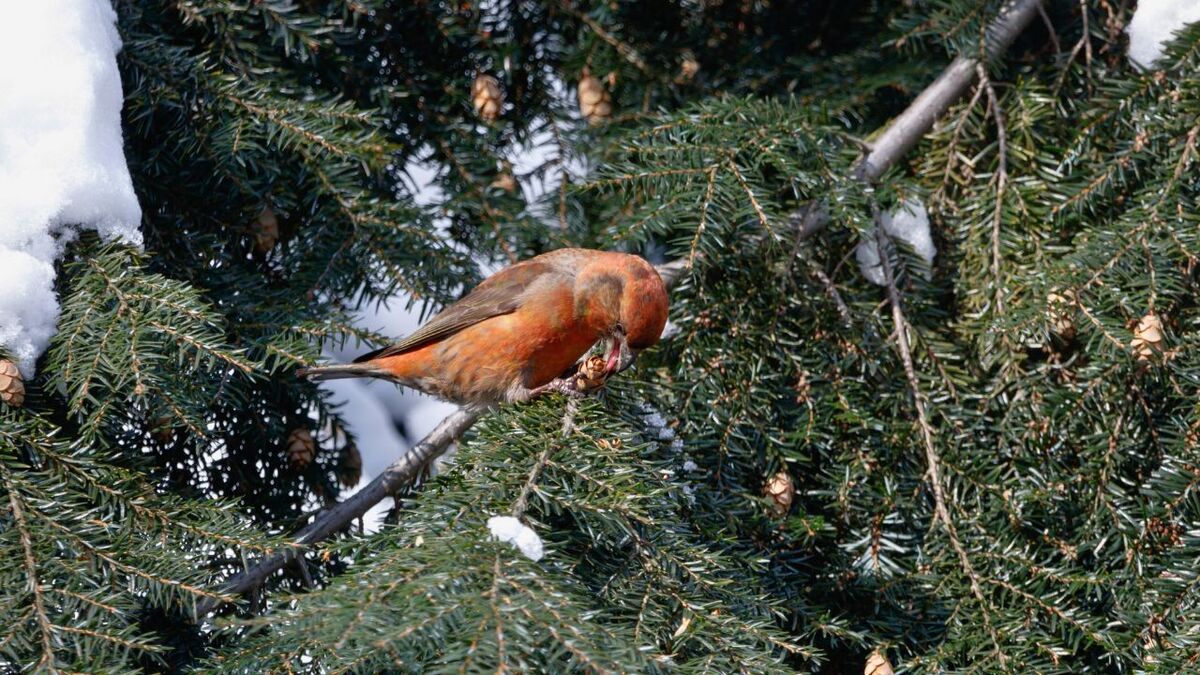
How to Find Crossbill Marks on Cones
Tracking down crossbill work is like a treasure hunt for advanced seekers. Here are my tips for you:
- Look up: Crossbills often work high in the trees.
- Search on the ground: The processed cones usually fall down.
- Pay attention to the splitting: Longitudinally cut cones are the trademark.
A personal tip from me: In winter, when other food is scarce, the chances of seeing crossbills at work are particularly good.
Crossbill Cones: Witnesses of an Amazing Adaptation
The cones processed by crossbills are like small wonders of evolution to me. Each split cone tells a story of adaptation, specialization, and survival skills.
Next time you find a cone that looks like it has been opened with a tiny zipper, you know: A master of cone art has been at work here.
Woodpecker Smithies: The Forest Restaurants
Imagine you discover a fast food restaurant for birds in the middle of the forest. That's exactly what woodpecker forges are - the snack bars of the forest, just much cooler and more eco-friendly.
What is a woodpecker forge?
When I discovered my first woodpecker forge, I was fascinated. It looked like a tree that had been worked on by a crazy woodcarver. Here are the main features:
- Column or hole in the tree: Often found in tree trunks or thick branches.
- Many notches: The area around the forge looks like a well-used workbench.
- Chip remnants on the ground: A sign of the diligent work of the woodpeckers.
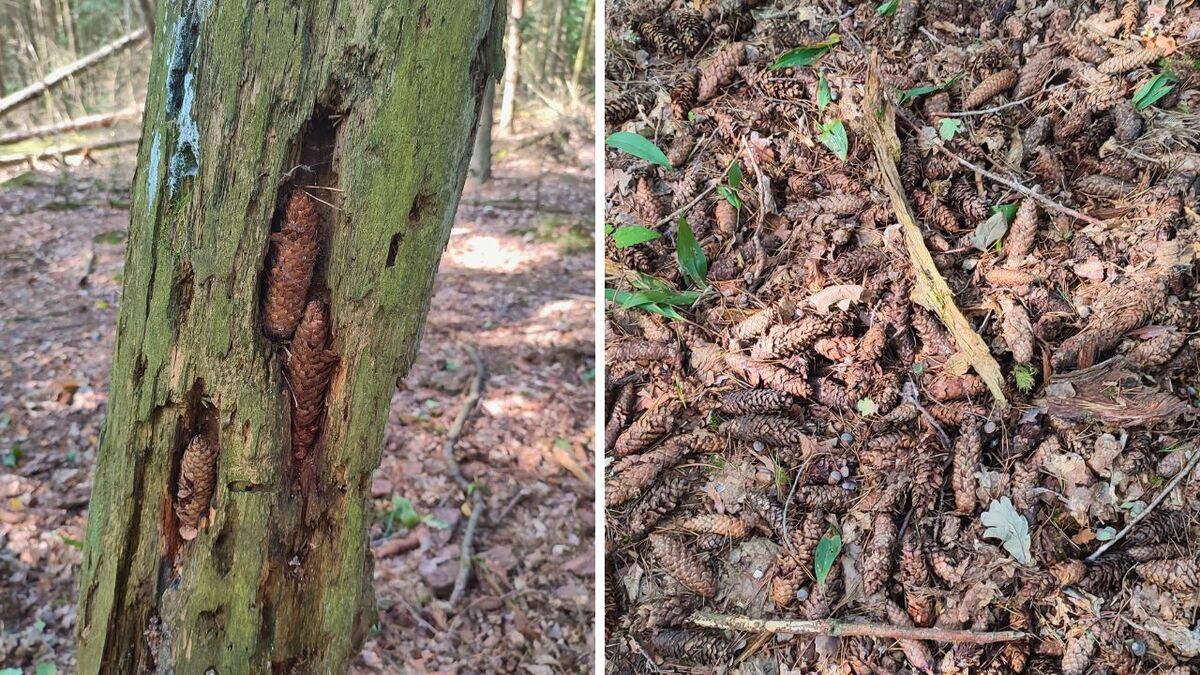
How Woodpeckers Use Their Smithies
Woodpeckers are true masters of efficiency. Their places are perfectly thought out:
- Clamp the cone: The woodpecker secures the cone in the column.
- Hammering and chiseling: With targeted strikes, he opens the cone scales.
- Extracting seeds: The tongue comes into play to catch the treats.
- Twisting: The cone is loosened, twisted, and worked on from all sides.
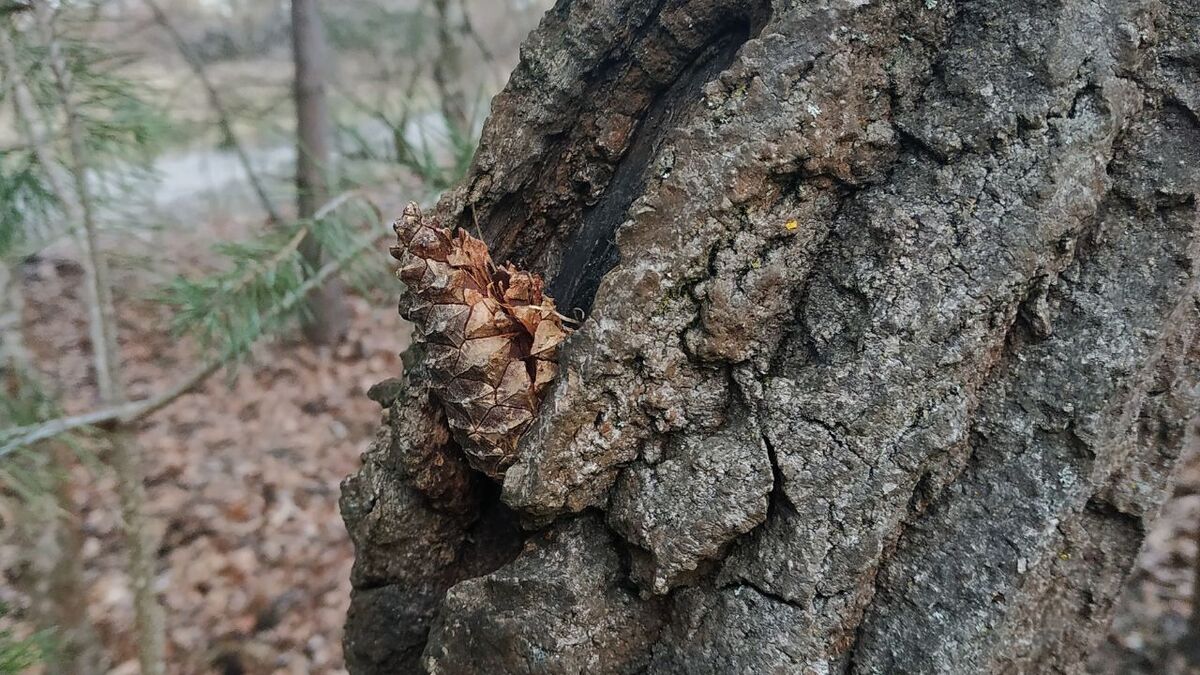
How to find a woodpecker forge
Finding a woodpecker's forge is like a treasure hunt in the forest. Here are my tips for you:
- Search for processed trees: Look for trees with many notches or rugged bark.
- Cone remnants on the ground: Under a forge, you often find a carpet of cone remnants.
A personal tip from me: Old trees with rough bark are particularly popular with woodpeckers for their foraging. These can also be oaks.
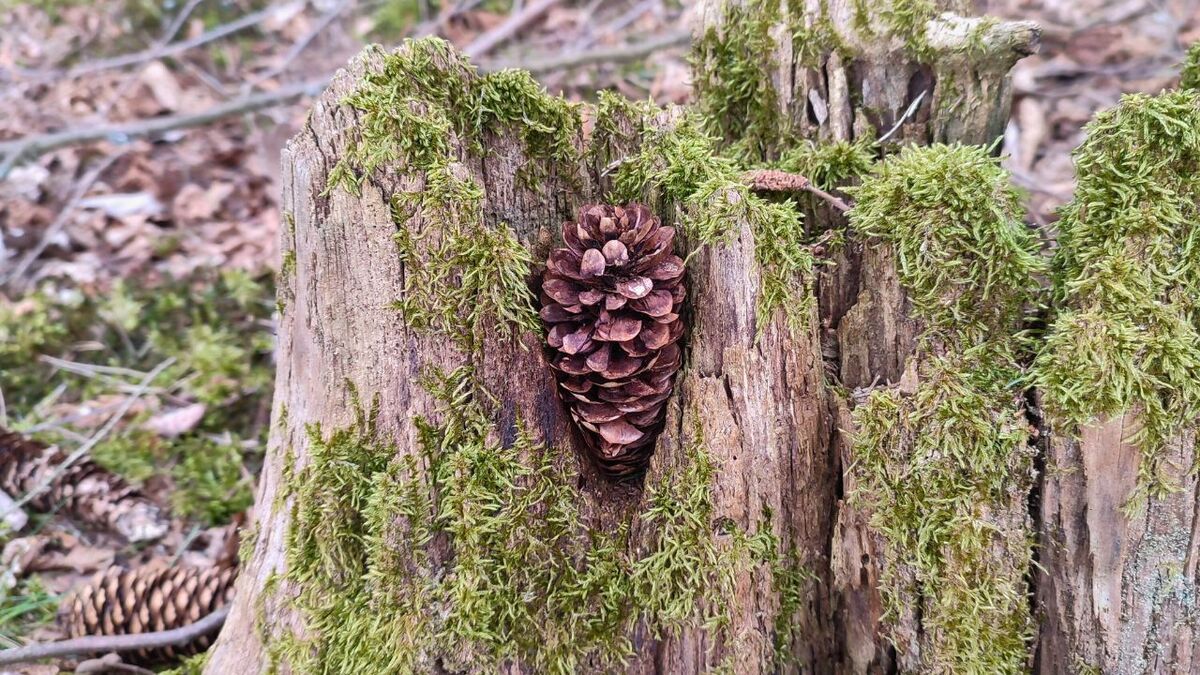
Woodpecker Forge: More than Just Feeding Places
These fascinating places are not only sources of food for woodpeckers. They are:
- Generationally: They are typically used for years or even decades.
- Learning places: Young birds practice their skills here.
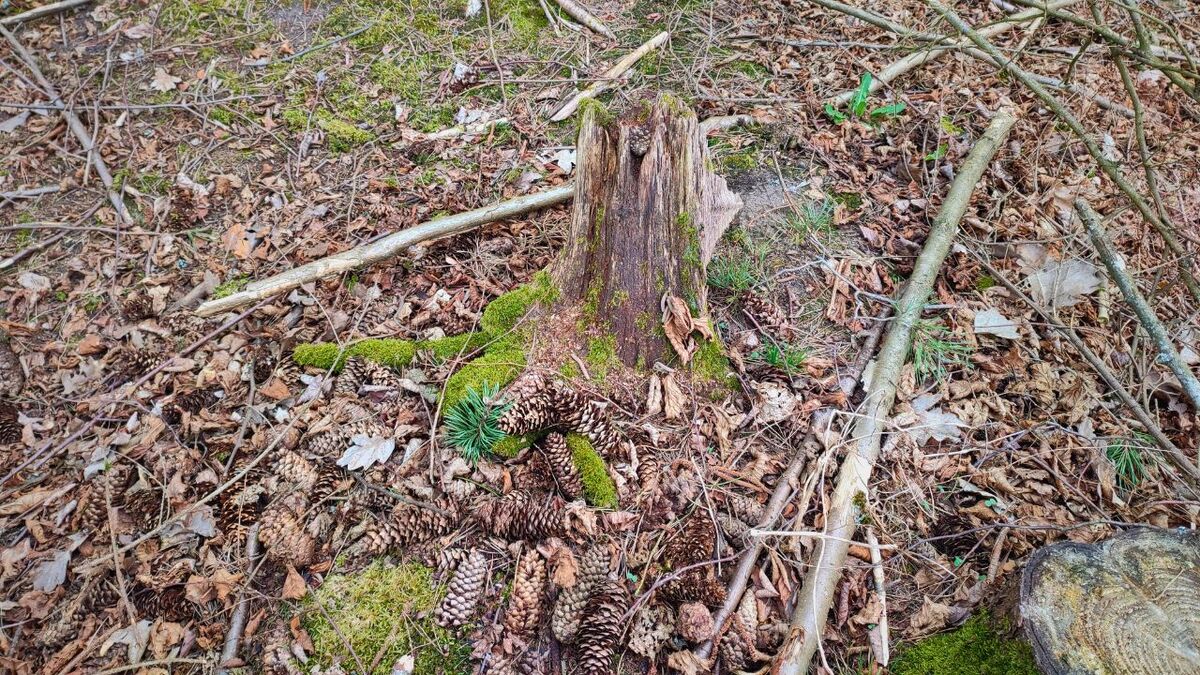
Why are cones actually on the menu of animals?
You may be wondering why so many forest animals are interested in these seemingly inedible cones. Well, let me share a secret with you: cones are like treasure chests full of nutrients!
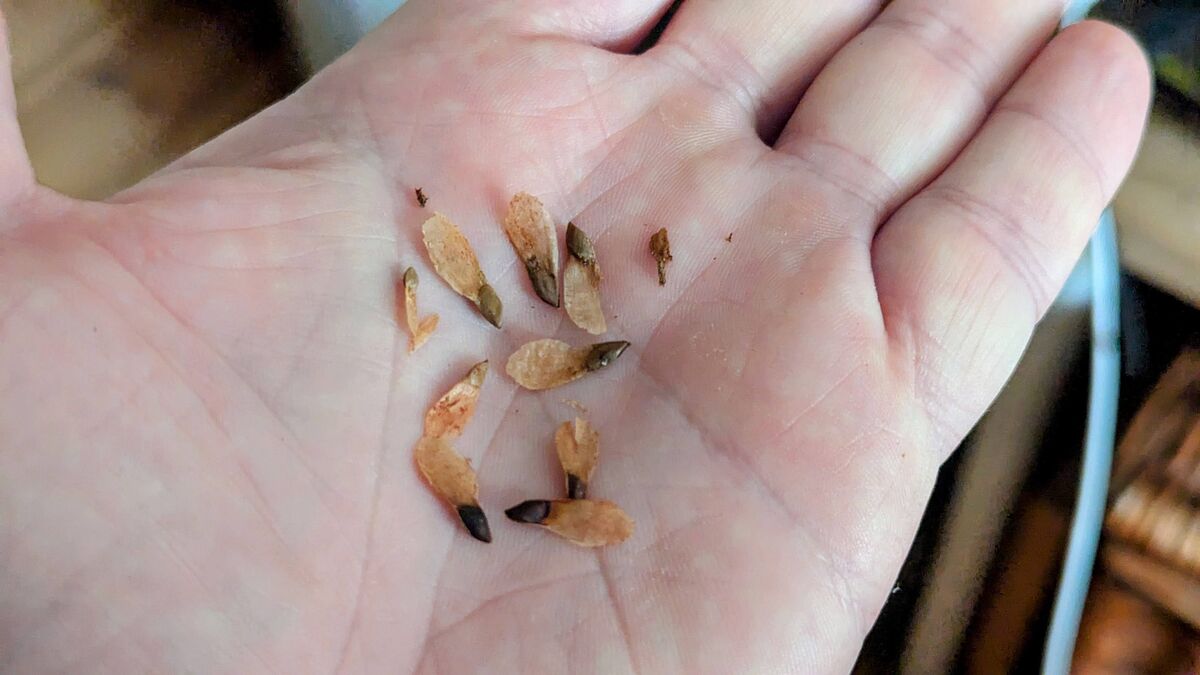
When I first broke open a cone, I was surprised at how many seeds were hidden inside. These seeds are true energy bombs, rich in fats and proteins.
For many animals, cones are like power bars, especially important during the harsh winter months.
Squirrels, mice, birds - they all know that beneath the hard scales real treats are waiting. It is fascinating to see how nature has packaged this food source so well.
The animals have to work for their meal, but the effort is worth it.
Every time I find a nibbled cone, I think about how clever nature is - it provides food while simultaneously demanding skill.
Further Resources
Now that you have become a true cone detective, you are surely eager to expand your knowledge and dive deeper into the fascinating world of forest tracks.
I have compiled some of my favorite resources for you that have helped me immensely on my journey of discovery.
"He who stops learning stops growing. The book of nature has no end."
Tracking for Beginners
If you want to improve your tracking skills, I can highly recommend my guide "Learn Tracking for Beginners" where you will find:
- Basic techniques for recognizing different animal tracks
- Illustrative image examples that help you identify tracks in nature
- Practical tips on how to sharpen your observation skills
Animal Tracks Database (in German)
For everyone who wants to know exactly, my animal tracks database is a real treasure. I have compiled my findings there over the years and continuously document new animal tracks there.
Here you will find detailed information about:
- Track signs of various forest animals
- Typical track patterns and many images
- Additional notes such as droppings, feeding traces, and markings
- Download of the most common track signs as PDF
This database is my constant companion and I keep expanding it. Check it out here: Visit the animal track database.
Test your knowledge
Are you ready for a challenge? Then you should definitely try the Animal Tracks Quiz here:
- Put your newly acquired knowledge to the test
- Solve exciting cases and compete with other nature lovers
- Learn surprising facts about forest animals and their tracks
Tracks in the Snow
For the winter months, I recommend the guide "Animal Tracks in the Snow". It was written by me, as a trained tracker, and offers:
- Special tips for reading tracks in snowy landscapes
- Unique features of winter tracks of various animals
- Many image examples and clarification on erroneous tracks depicted online
- Download of the most common track prints as PDF
My personal tip: Go outside now
In addition to these fantastic online resources, I would like to give you a personal piece of advice: Nothing replaces practical experience.
Grab a notebook, a camera, and head out into the woods. Observe, document, and compare your findings with the resources.
Over time, you will find that you understand the language of the forest better and better. Every cone, every track will tell you a story. And believe me, these stories are fascinating!


Author of the guide
Martin Gebhardt
Hey, I'm Martin. On my blog, you will learn the basics and numerous details about living in the wild. I think survival, bushcraft and the good life in nature are the keys to happiness. Find me here on Instagram or on YouTube. You can find more about my mission on the About Me page.
Was this guide helpful?
18 people found this guide helpful.
5.00 out of 5 points (18 Ratings)
Comments (0)
This post may contain affiliate links. So if you click on the links and make a purchase, I will receive a small commission at no additional cost to you. Click here, to learn more about it.



